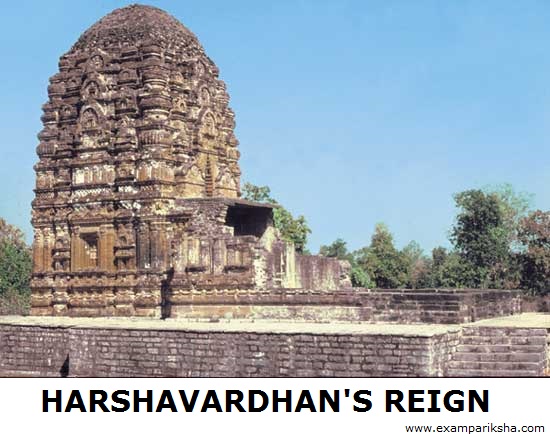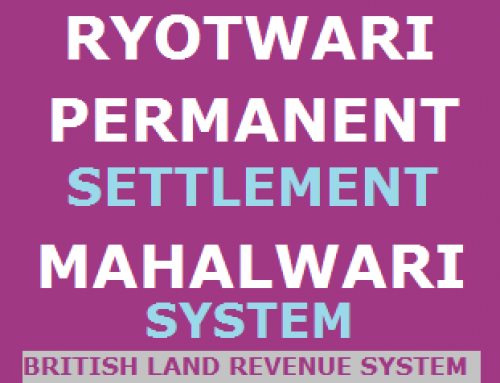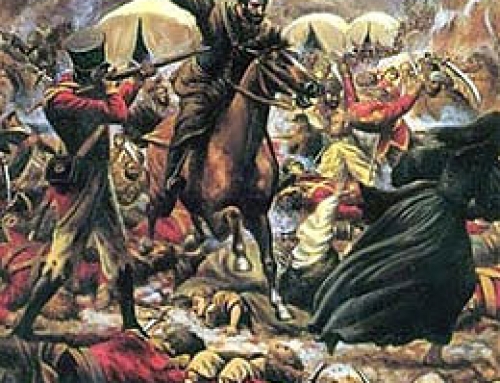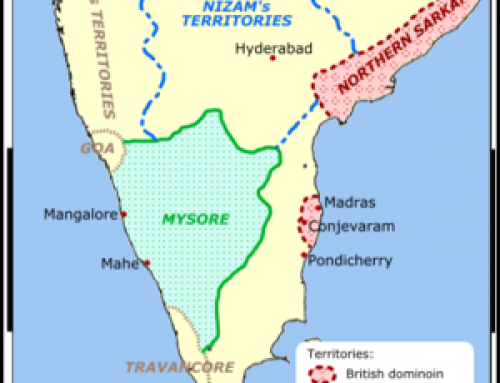After the decline of Gupta Empire, there was disorder on political front in India. In the beginning of 7th century BC, Harshavardhan established a large kingdom in Northern India.
Sources for Study of Harshavardhana’s Reign:
- Harshacharita written by Bana, his court poet.
- Travel accounts left by Hiuen Tsang, the Chinese traveller.
- Other important sources are dramas written by Harsha himself: Ratnavali, Nagananda, Priyadarshika.
- Madhuben plate inscription.
- Sonpat inscription.
- Banskhera inscription- has Harsha’s signature.
Pushyabhuti Dynasty:
- It’s founder was Pushyabhuti. They were feudatories of the Guptas and were known as Vardhans.
- They became independent after the Hun invasion.
- Their capital was Thaneshwar, to the north of Delhi.
- An important king of Vardhan Dynasty was Prabhakaravardhan.
- After his death, his elder son Rajyavardhan assumed the throne. He was treacherously murdered by Sasanka, the ruler of Bengal.
- Thereafter, Harshavardhan succeeded his brother.
Extent of Harshavardhan’s Empire:
Harsha ruled over a vast territory consisting of eastern Punjab, Uttar Pradesh, West Bengal, Bihar, Orissa under their control. Nepal had accepted his overlordship. Harsha defeated the ruler of Kannauj and made Kannauj his new capital.
Most important battle fought by Harshavardhan was against Chalukyan ruler Pulakeshin II with the ambition to extend his empire beyond Narmada. Aihole inscription of Pulakeshin mentions that Harsha was defeated.
Administration in Harshavardhana’s Reign:
The administration during Harsha’s reign was similar to that of the Guptas. Hiuen Tsang has described it in much detail.
- The administration was more feudal and decentralized during Harsh’s reign as compared to that of the Guptas.
- Harsha probably began the practice of granting land to officers in lieu of salary.
- The maintenance of Public records was a characteristic feature of Harshavardhan’s administration.
- The archives were called nilopitu, and were handled by special officers. The records of good as well as bad events that occurred during the the time have been recorded in them.
- Taxation was light and forced labour was also rare.
- One-sixth of the crop produce was collected as land tax.
- The king made frequent visits of inspection throughout his dominion.
- Harshavardhans Army consisted of four divisions- foot, chariot, horse and elephant. It was much more than that of the Mauryans.
- There was provision of cruel punishments, similar to the Mauryan times.
- Harshavardhan had diplomatic relations with China.
Economy and Society during Harsha’s rule:
- There was fourfold Varna system in place comprising- Brahmins, kshtriya, Vysya, and Sudra.
- Brahmins received land grants from the king, Kshtriyas were the ruling class, Vysyas were involved in trading and Sudras practiced agriculture. There were many sub-castes.
- Position of Women: Women lost the privileges of Swayamvar(the choice of choosing the husband), Widow remarriage was not permitted, especially among higher castes. The practice of Dowry and Sati became prevalent.
- Burial of dead: dead were disposed either by cremation, water burial or exposure in the woods.
- During Harshavardhana’s reign, trade and commerce declined, as depicted by an decrease in trade centres.
- This decline also affected handicraft and agriculture. This also led to rise of self-sufficient village economy.
Developments in Art & Culture during Harshavardhana’s Reign:
The architecture during Harsha’s period was based on Gupta style primarily. Hiuen Tsang refers to a 8 feet tall copper Buddha statue. He also talk of a multistory monastery at Nalanda. In Chhattisgarh at Sirpur, a brick temple of Lakshman is surviving example of architecture during Harsh’a period.

Sirpur’s Lakshaman Temple
Learning: Harsha was great patron of learning and himself authored three plays- Ratnavali, Priyadarsika, Nagananda. He also patronised Nalanda university. Harsha’s biographer was Banabhatta, who wrote Harshacharita and Kadambari. In Harshavardhana’s court other notable figures were Matanga Divakara and Barthrihari( poet, philosopher and grammarian).
Religion during Harsha’s Reign:
Harshavardhan was a Shaiva follower in the beginning but gradually embraced Buddhism. He was a tolerant ruler. It is believed that Hiuen Tsang converted him to Mahayana Buddhism. Harsha prohibited animal slaughter for food in his kingdom. He also erected various Stupa and established travellers’ resthouse all over his kingdom. He conducted a gathering of representatives of all religions once in every five years. Two of them are important:
Kannauj Assembly:
- It was presided over by Hiuen Tsang.
- 20 kings, 1000 scholars of Nalanda University, 3000 Brahmins and Jains attended this assembly at Kannauj.
- It continued till 23 days.
- Here Hiuen Tsang explained and established superiority of values of Mahayana doctrine over others.
- However, violence broke out and an assassination attempt was made on Harsha’s life.
<< Read about The powers of Prime Minister in India here>>
Allahabad Assembly also known as Prayag Assembly:
- It was held for 75 days where quinquennial distribution by the king to the people happened.
- Hiuen Tsang was invited by Harshavardhan to withdraw this sixth distribution of alms and gifts(Maha Moksha Parishad) at Prayag.
- Hiuen Tsang writes that Harsha actually gave away everything in the royal treasury.
<< Read about world Bank and IMF here>>
<< Read The list of Jnanpith award winner>>





